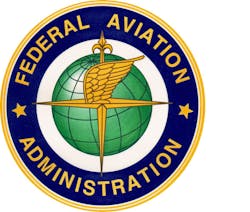On August 20, Flight Standards transitioned its management structure from the traditional geography-based regional structure to a functional structure. The new functional structure aligns our leadership in four areas: Air Carrier Safety Assurance, General Aviation Safety Assurance, Safety Standards, and Foundational Business.
This structural realignment should be completely transparent to you. We have “erased” the geographic boundaries and aligned our reporting and management practices according to function, but you will not see any structural change to the local FAA offices who serve you today.
What you should see, though, is continuing improvement in how those offices operate. As I have said many times to our employees, our structural changes are important, and they are the most visible part of our Future of Flight Standards transition. But structural change won’t do much for us without the essential cultural changes at both the individual and organizational levels. For several years now, we have been stressing the importance of interdependence, critical thinking, and consistency in our workforce, and these behavioral attributes and competencies are now embedded in each Flight Standards Service employee’s work requirements. At the organizational level, the ongoing culture change includes training managers in the competencies of change management, and the "coach approach" to leadership, which is about helping employees by expanding awareness and sharing experience.
With our less-tangible but absolutely critical culture changes well underway, we were finally in a position to benefit from the structural realignment. The organizational intent of the shift to functional organization is to increase efficiency, eliminate multiple interfaces, and integrate surveillance activities, and to improve our performance in several areas:
Accountability to Flying Public, Stakeholders
- Meet the needs of a constantly and rapidly changing industry
- Fix/prevent issues with consistency and standardization in regulatory interpretation
Budget Constraints
- Balance allocation of resources
- Increase efficient use of personnel and travel funds
- Reduce redundancy in regions
Change Readiness to Meet Constant Stream of New Challenges
- Operational agility, efficiency, and effectiveness
- Consistent service and performance
Decision-Making – e.g., Risk-Based Decision-Making Strategic Initiative
- Culture and structure that facilitate effective implementation of risk-based decision-making, including Compliance Philosophy
You can probably see how our cultural and structural changes are mutually reinforcing, and how both aspects of the transition contribute to a Flight Standards Service with greater accountability, better use of resources, and change readiness. So the change we do want you to notice is what we have already been hearing from some of our industry stakeholders. From my vantage point, the conversation with industry has changed for the better. Our stakeholders are noticing that we are responding in a different way, with a greater amount of service, and with better care and quality. I hope and expect that your experiences with Flight Standards will be similar.
I also hope and expect that you will also see us continue to improve. You’ve probably heard it said that “the future is now.” What that means to me – and for the FAA Flight Standards Service as a healthy organization – is that the future is the result of what we do right now. So I want to see us get better still at practicing our new cultural norms, and creating a Flight Standards Service that is truly agile, efficient, and consistent in our service to you. We owe you that, we are ready to deliver.
John Duncan is the Executive Director of the FAA Flight Standards Service.
Resources
The Realignment Toolkit: The Realignment Toolkit is designed to provide a one stop shopping point for information on realignment. Our intent is to provide as much information as possible to everyone. External Toolkit Link: Click Here.
New Flight Standards Service Websites: The Flight Standards Service websites have been updated to provide additional information. We offer both internal and external versions that provide links to the functional area offices. External Flight Standards Website Link: Click Here.
Rapid Response Team: The Rapid Response Team (RRT) responds quickly to any issues that arise from realignment. These could include: information technology access issues, routing/coordination, roles and responsibilities, work stoppages, applicant issues, etc. To contact the RRT, you have the following options:
Email: [email protected]
Telephone number (external stakeholders): 888-283-8944.
Note: All modes of communication with the RRT are monitored 8:00 a.m. - 8:00 p.m. Eastern time zone.
InFO 17010, Federal Aviation Administration’s (FAA) Flight Standards Service Reorganization
